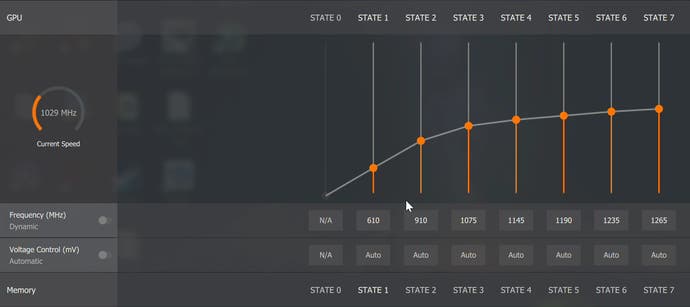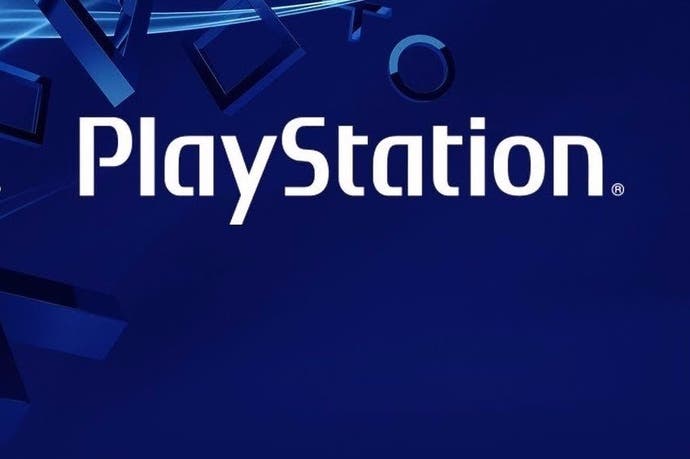In Theory: Can Sony upgrade PlayStation Neo's specs?
Microsoft's Scorpio spec is stronger. Can Sony close the gap?
The date is set. On September 7th, we will see what Sony's been up to with PlayStation Neo - we should finally get some idea of the firm's vision for the new hardware, details on software support, and if we're really lucky, we should see live demos of Neo titles courtesy of Sony first party studios, amongst others. But despite some pretty solid leaks, speculation continues on the actual Neo spec. Could Sony pull a surprise out of the bag and reveal a more powerful unit at the upcoming PlayStation Meeting?
For some time, there has been some discussion about the technological make-up of Sony's new console. It kicked off with a NeoGAF thread with insider info suggesting that the platform holder had been considering two different specs with a price differential, the more expensive offering featuring a faster CPU and possibly a more capable graphics component. The speculation accelerated in the wake of Microsoft's Project Scorpio reveal at E3 this year: the new Xbox's six teraflop GPU is clearly more capable than the mooted 4.2TF graphics core inside Neo. Could Sony pivot and respond by beefing up the specs on its machine?
Looking back to PlayStation 4 and Xbox One, there is some precedent. Each, in its own way, received a pre-launch specs boost. Microsoft tinkered with CPU and GPU clocks, increasing the former to 1.75GHz and the latter to 853MHz. Sony surprised many of us - including many disclosed developers - by revealing that PlayStation 4 would have more than the four gigs of onboard GDDR5 initially specced. The big reveal on the night of February 21st 2013 was a doubling of memory, effectively removing the key spec shortfall it had against Xbox One - or Project Durango as it was known back then.
So what options are open to Sony here? The reality is that the options available are somewhat more limited than you may think. Microsoft's Xbox One clock-speed boosts were possible owing to a number of factors - but first and foremost there was the sheer size of the chassis and its relatively enormous cooling solution. Adding nine per cent to CPU clocks and seven per cent to the GPU would not have troubled the thermal solution whatsoever. Conversely, assuming Neo follows PS4's design philosophy, we should expect a traditional console-like design with a similar cooling assembly. PS4 already gets hotter and noisier than Xbox One - upping clocks on what is likely to be a large processor may not be an option unless there's a new approach to the size of the machine and the internal cooler.
| Base PS4 | PS4K Neo | Boost | |
|---|---|---|---|
| CPU | Eight Jaguar cores clocked at 1.6GHz | Eight Jaguar cores clocked at 2.1GHz | 1.3x |
| GPU | 18 Radeon GCN compute units at 800MHz | 36 'improved' GCN compute units at 911MHz | 2.3x FLOPs |
| Memory | 8GB GDDR5 at 176GB/s | 8GB GDDR5 at 218GB/s | 24% more bandwidth, 512MB more useable memory |
We already know from the initial spec that Sony has had to be relatively conservative with its system clocks. The Polaris 10 GPU found in AMD's recent RX 470 and RX 480 graphics cards adjusts frequencies dynamically, switching between different power states, as you can see in the shot below. Via the Radeon Global WattMan application installed with the driver, we can see the processor clock vs power consumption curve. There are seven power states in total, and the Neo spec rests at the relatively meagre power state two.
What's interesting about the power curve we see in the WattMan app is that it looks as though the best balance between power consumption and performance actually comes at power state three - 1075MHz. If the cooling assembly can handle it, this is the most viable spec boost option available to Sony, representing an 17 per cent increase in theoretical performance, moving the Neo GPU up to five teraflops.
However, we have to put the emphasis on 'theoretical' there, because the effectiveness of additional compute resources tends to scale in line with memory bandwidth. Here, the Neo spec sits at 218GB/s - not especially prolific sitting next to the 320GB/s bandwidth that Microsoft has allocated to Scorpio's 6TF system. Upgrading this would require Sony to move to premium-priced 8gbps GDDR5, as found in graphics cards such as RX 480 and GTX 1070. Such a move seems unlikely.
Back in the day, Sony's big PS4 spec boost - the move from 4GB of GDDR5 to eight gigs in the final unit - was relatively easy to pull off. The firm managed to strike a deal with Samsung for its new 512MB GDDR5 memory modules - double the density of existing DRAM - but totally compatible otherwise with the more standard 256MB chips available at the time. No design alterations to PlayStation 4 were needed - it was literally a drop-in replacement of one set of DRAM modules for another. We understand that initial plans for PS4 concerned bundling the PlayStation Camera as standard. Sources suggest that Sony financed the doubling of system RAM by removing the camera from the package - a highly astute move. With Neo, there's less wiggle room in the basic design based on the leaked spec, and only very limited gains in moving to more expensive modules.
So what of the speculation concerning two competing Neo designs, one of which would have a more capable CPU and faster GPU with a $100 premium? It's worth stating that no development sources I've spoken to have knowledge of this, and all of the documentation open to developers - who are making Neo games now - still reports the same 2.1GHz Jaguar CPU cluster paired with a 4.2TF GPU.
And it's worth pointing out that AMD's semi-custom processor design work is not cheap. Creating two prospective designs would cost Sony a lot of money for very little return. As things stand, PlayStation Neo's spec is pretty much the fastest console processor that AMD would have been able to make in time for a 2016 release. Polaris 10 is its most capable GPU and AMD's Zen processor still isn't ready for market. Zen is such a radical departure from PS4's Jaguar core architecture that compatibility may been an issue there.

A viable option would have been to produce a larger Neo chassis with a meatier cooling assembly, which could in theory have allowed for the same processor to run at higher clocks. Power state three's 1075MHz would indeed have handed in a faster 5TF GPU, and maybe the AMD Jaguars could have been pushed further. In addition to a better thermal solution, maybe that extra $100 price premium could have financed faster RAM, with 8gbps modules taking us up to 256GB/s of bandwidth. However, I suspect this is all a moot point, a case of diminishing returns. Even if Sony pushes its new processor to the limits, the actual deliverable gameplay experience isn't going to be radically different. AMD's Radeon RX 470 is a cut-down version of the RX 480 - lower memory bandwidth, less compute - but the performance differential in terms of the gameplay experience is not hugely significant.
And while the focus has been on the Neo vs Scorpio teraflop differential, some of our recent testing has thrown up some interesting insights on current-gen console balance, particularly in terms of just how much of a bottleneck the Jaguar CPU cluster is. Xbox One S has a seven per cent GPU bump over the original hardware, and this has proved fascinating in that it allows us to isolate areas in gameplay that may well be CPU-bound in nature.
Fallout 4 and Just Cause 3 hammer the eight-core Jaguar cluster and both of them play identically between the two Xboxes, despite the One S GPU bump. Galloping through Novigrad City in The Witcher 3, we see the same lurching dips below 30fps on Xbox One S. A 2.1GHz boost to CPU in Neo is obviously welcome here, but clearly the 31 per cent bump in performance isn't going to turn a 30fps machine into a 60fps one, but realistically that isn't likely without a whole new architecture in place.
The biggest obstacle to a Neo specs boost is rather more mundane in nature though - production timescales. A 2016 release date is looking likely and we could even see Neo on shelves as soon as October, meaning that the console spec would have been nailed down many, many months ago. This is the reality of creating a mainstream consumer electronics device with a production run in its millions. The processor would have been in production for some time, and the memory module deal would have been completed many months ago - probably way ahead of the Scorpio specs reveal.
And with Neo software submissions happening now, it would be pulling the rug from under developers to suddenly switch specs. On top of that, while Sony will have a spec disadvantage against Microsoft, it may well be out on the shelves up to a year earlier, and it should be cheaper too - Scorpio's 6TF processor won't be inexpensive to produce, and that's not even factoring in the the 12GB of memory that Microsoft's mainboard render suggests it has.
I'll be happy to see a spec boost at the upcoming PlayStation Meeting - and it's not beyond the realms of possibility, but the combination all the factors discussed here makes it seem unlikely. However, there is one potential theoretical win that Sony could provide that I think would be something of a crowd pleaser - and it comes back to the results we've seen from the Xbox One S GPU spec boost. Fundamentally, Xbox One S's GPU bump is a proof of concept that demonstrates that additional graphics power can be deployed on existing games without breaking them.
At the moment, Neo's 'base mode' - which provides total compatibility with the older PS4 - appears to default to standard 1.6GHz CPU/800MHz GPU clocks, presumably with downgraded memory bandwidth to match. What if the base mode was enhanced with the faster CPU and GPU resources available with the new hardware? Developers would be free to add in full Neo patches for enhanced features, but all other existing PS4 titles would stand to benefit with fewer drops from their target frame-rates. It would be a welcome upgrade and an instant win that could help to shift a lot of boxes.












